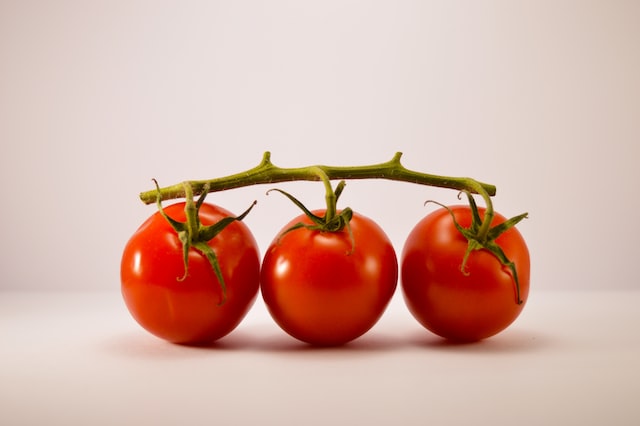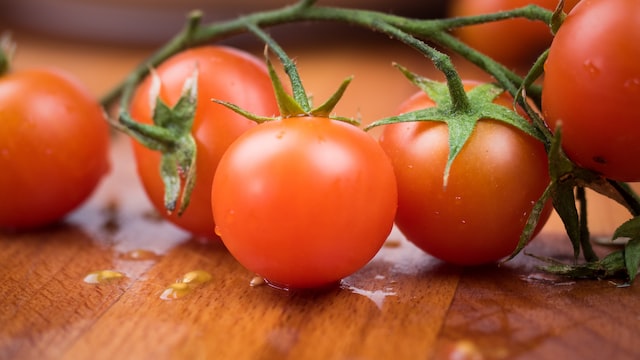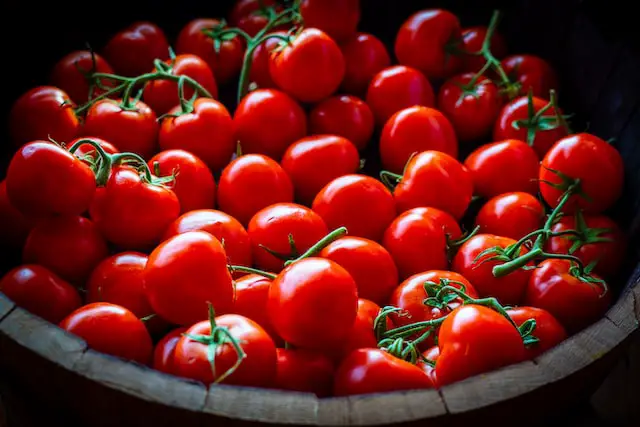in the late 19th century, tomato production in the state of Arkansas expanded as canneries and tomato sheds sprang up across the state—and our neck of the woods, Bradley County, is perhaps the best-known tomato-producing region in the Natural State. The Bradley County “pink” tomato was first grown in 1923 after Texas boll weevils struck the areas cotton crops, making it necessary to find a new agricultural product to depend upon.

Since then, it’s been a love story between the people of southeast Arkansas and the tomato. In fact, to mark this enduring relationship with the versatile fruit, the city of Warren hosts Arkansas’ longest-running annual celebration, the Pink Tomato Festival, every June. This year will mark the 61st consecutive year for the popular event.
My personal favorite for sauce, canning or fresh off the vine is the Bradley heirloom. Bradleys fill the lion’s share of my garden’s tomato rows and are known for their translucent skin, appearing more pink than red when fully ripe. They also bear the distinction of having a “cat-face” shape, where the fruit forms in a manner extending up around the stem. It has a high acid content and extremely sweet flavor.
Arkansas tomato season is a wonderland of fresh, sliced tomatoes of all varieties, but there’s no reason to forgo that great flavor during the winter months. Home-canned tomatoes can bring a bit of summer’s brightness to any meal, and by using this time-tested method, you too can enjoy Arkansas tomatoes year-round:
1. Place tomatoes in a large pot. You can use any size you want (depending on the size of your harvest), but a three-gallon cooking pot is a good, manageable size.
2. Fill the pot with water until the tomatoes are covered. Bring to a gentle boil for approximately eight minutes. Once the skins begin to loosen, remove the pot from the stove. Tomatoes will be dangerously hot at that point!
3. Carefully pour off the steaming water and let the tomatoes cool, then peel the skins off by hand.
Place the now-skinless tomatoes back into the pot and bring them back to a rolling boil. The juicy tomatoes will produce enough liquid that additional water should be unnecessary.

4. Add a pinch of both salt and sugar to the mix. Simmer for twenty minutes, stirring occasionally to prevent scorching. Let the mixture cool, then line up your jars on a dishtowel and begin ladling the stewed tomatoes into containers. Wipe the jar lips clean and screw the two-piece lids on hand tight.
The most important part of the entire process is to make sure the lids seal. The heat from the product is generally enough to do this, but to ensure proper sanitation, place the filled jars in boiling water for ten minutes. Use a jar grabber to remove the canned tomatoes from water and set them out to cool. As the ingredients reach room temperature, a clear click may be heard as the lids snap down to achieve their final seal.
Mark your freshly canned tomatoes with the date, then store in the pantry. Now, when you’re ready to make spaghetti, soup or any other delicious tomato-based dish, you’ll be able to fetch down your pure, home-canned ‘maters from the pantry and enjoy the fruits of your labor. Good luck and happy canning!
WHAT’S YOUR TOMATO TYPE?
What sort of tomatoes do Arkansas farmers swear by? The answer is as varied as the farms themselves. We asked several local farms about the varieties they grow year after year. Keep a look out at the markets for these!

Mudtown Farms, Lowell: “Cherokee Purples are one of the most popular here in our area—and the most flavorful. My personal favorite is Green Zebra striped heirloom tomatoes as they do well here and have low acid and great flavor.”
Colbe’s Crops, Alexander: “I have tried growing several kinds of tomatoes—Better Boy, Big Beefy, Big Boy, Roma and cherry tomatoes. This year I planted all Better Boy tomatoes because my customers really seemed to like those last year—and I had an excellent crop.”
Me and McGee Market, North Little Rock: “We grow Super Fantastics. This variety produces high yields of large fruit all summer and through the fall. They have a great flavor for eating fresh—and we can our fresh salsa with these too.”
